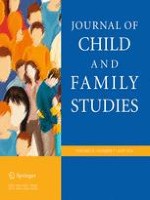24-02-2016 | Original Paper
Assessing Future Expectations of Low-Income Minority Young Men: Survival-Threats and Positive Expectations
Gepubliceerd in: Journal of Child and Family Studies | Uitgave 7/2016
Log in om toegang te krijgenAbstract
Future expectations, a subset of overall orientation, represent youths’ most realistic appraisals of future outcomes, and has been demonstrated to be associated with a range of health risk behaviors and wellbeing. The current study extends previous measurement efforts to operationalize and measure future expectations by estimating a multidimensional model of future expectations encompassing both positive and survival-based expectations, and using longitudinal data to test the consistency of these constructs over time. The current work uses data from six waves of the Chicago Youth Development Study (n = 338), a sample of African American and Latino young men from low income neighborhoods in an urban center, to test a hypothesized multidimensional structure of future expectations across adolescence. Test retest confirmatory factor analyses from six waves of data covering the mean age range of 12–19 years reveal good model fit for the hypothesized multidimensional model of future expectations at each wave. Strong measurement invariance based on race/ethnicity is established for the multidimensional model. Implications for a latent construct approach to future expectations with low-income racial/ethnic minority young men are discussed.
